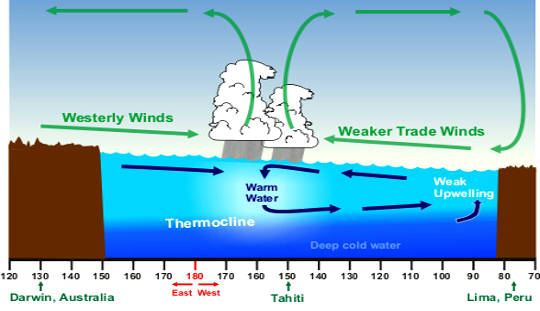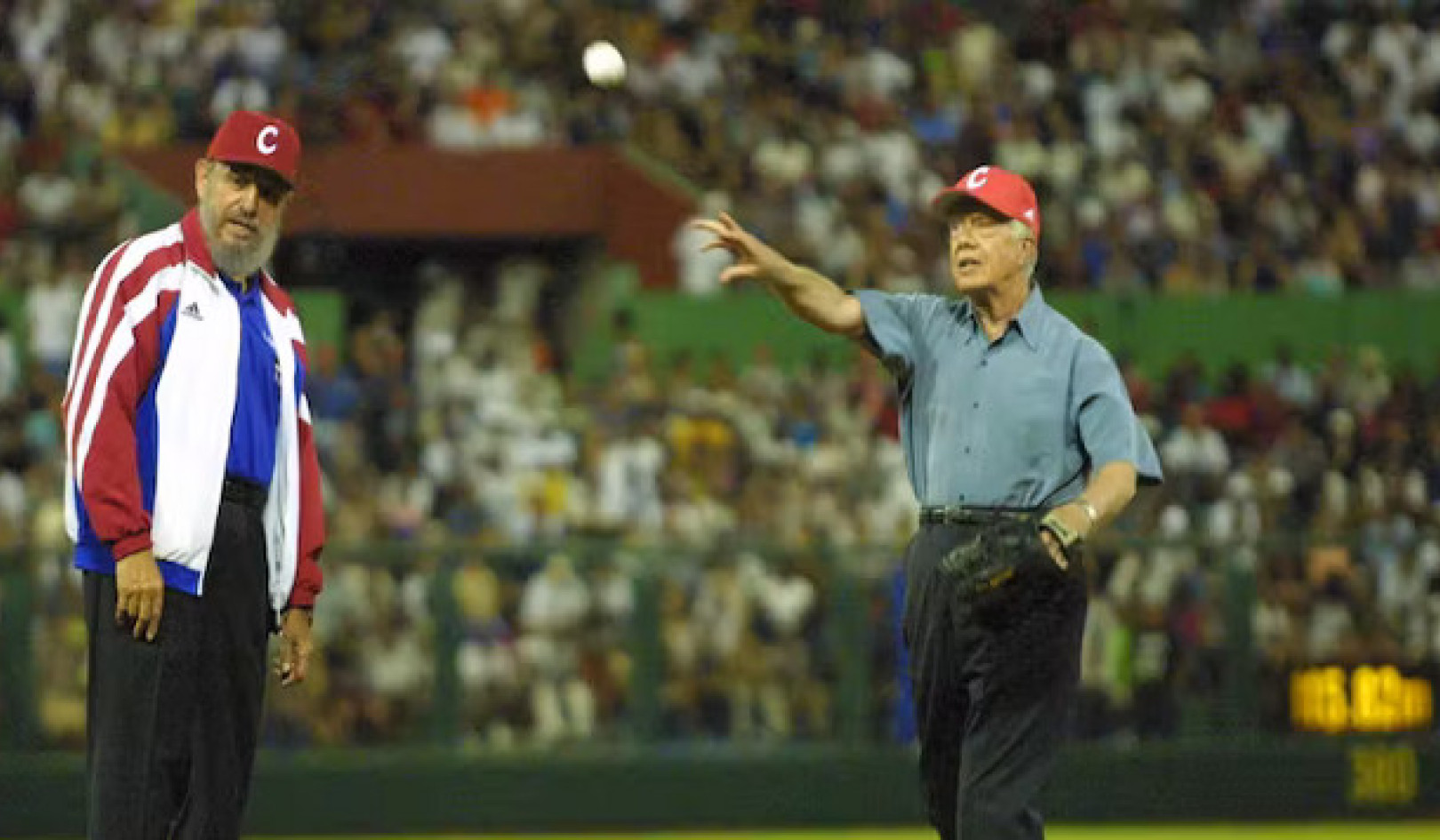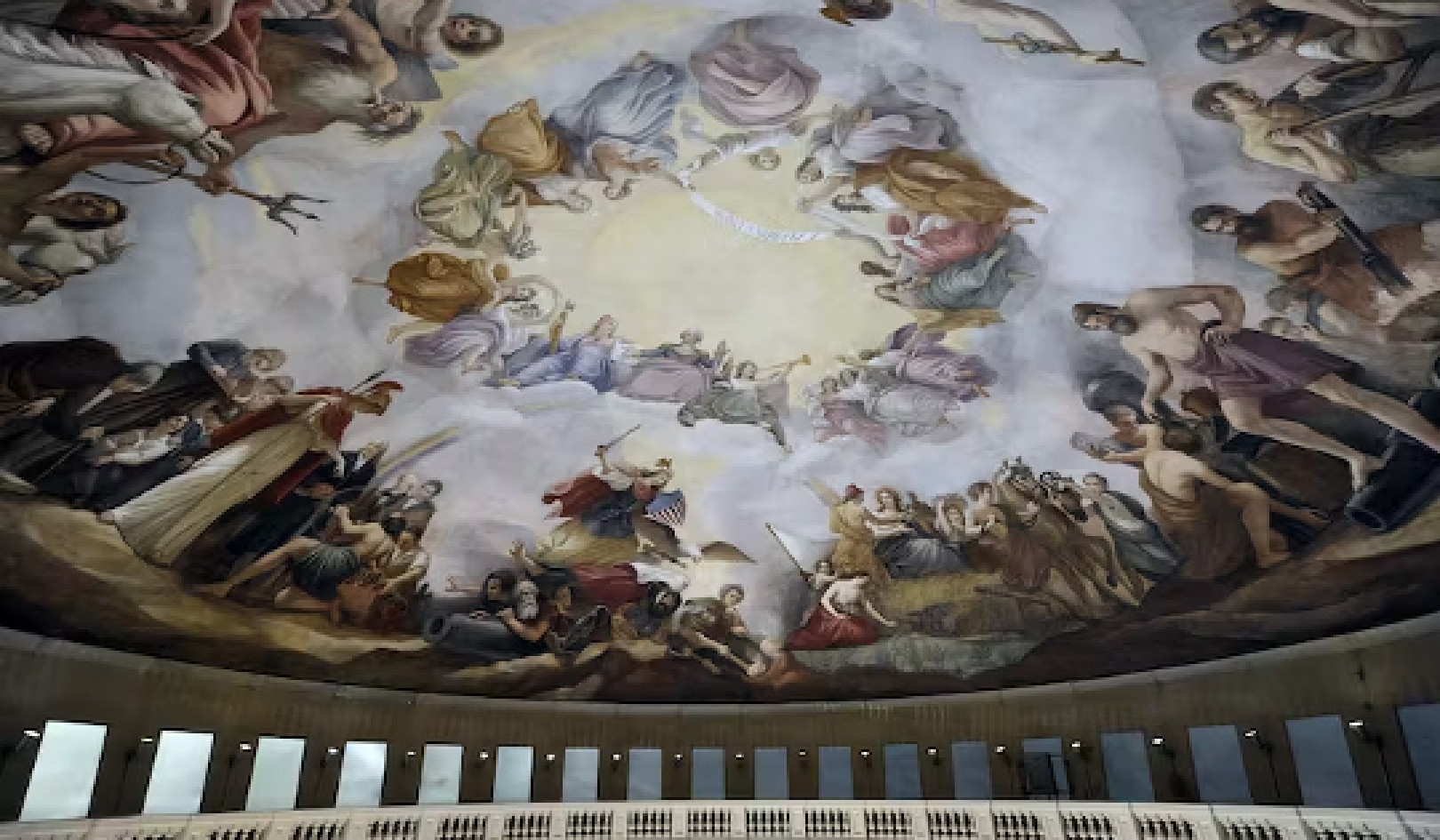
A new theoretical model may lead to timelier, accurate forecasts of the central Pacific El Niño, an important weather-maker.
Any El Niño is a period of warmer-than-normal sea-surface temperature in the equatorial Pacific. These anomalies, and the related air pressure fluctuations, can have teleconnections—long-distance effects—on weather far away from the region. CP El Niño events can last for years, and have been “very frequent in the last 25 years,” says Andrew Majda, professor of mathematics and atmosphere/ocean science and principal investigator at NYU Abu Dhabi’s Center for Prototype Climate Modeling.
Majda and Nan Chen, postdoctoral researcher at NYU’s Courant Institute of Mathematical Sciences, report what they have learned about the “genuine puzzle” of how a CP El Niño occurs in the Proceedings of the National Academy of Sciences.
CP El Niño, located far from any continental shore, is linked to severe weather around the globe including massive rainfall in the southeastern US, drought in California and Asia, and most notably the yearly Indian monsoon, which can lead to life-giving harvests but also deadly floods.
“We started with a simple computer model you can run on a laptop,” says Majda, “and astonishingly we started fitting what was seen in observations” from past years.
Their refined theory incorporates how changing ocean currents can move warm water around. “We found,” Majda explains, “that nonlinear transport of sea-surface temperature was an important new ingredient.” Other factors in the new theory are the strengthening trade winds that blow east-to-west across the Pacific, and “wind bursts”, the incessant, effectively random variations in wind strength during an El Niño.
Assembling these factors, Majda says, produced a model with “a striking resemblance to the CP El Niño events from 1990-1995 and 2001-2006.” This “now gives the people who make operational models a way to see what they need to … capture. Current operational models have difficulties capturing key features of the CP El Niño, just the familiar one [the eastern Pacific El Niño].”
But practical precise forecasting, Majda cautions, will demand further theoretical development, and work with “the operational community” of major labs such as the US National Centers for Environmental Prediction, the Geophysical Fluid Dynamics Laboratory at Princeton University, and the Indian Institute of Tropical Meteorology. “We’re already working as a group,” Majda says.
“You have to say ‘the potential for better forecasts’,” Majda adds, because achieving practical forecasting will still “require an effort of several years.”
Ultimately, Majda says, reliable long-range forecasting of the monsoon would have “huge societal impacts, in agriculture, disaster relief, drought planning,” and other fields.
Source: Brian Kappler for New York University
Related Books:
at InnerSelf Market and Amazon




























